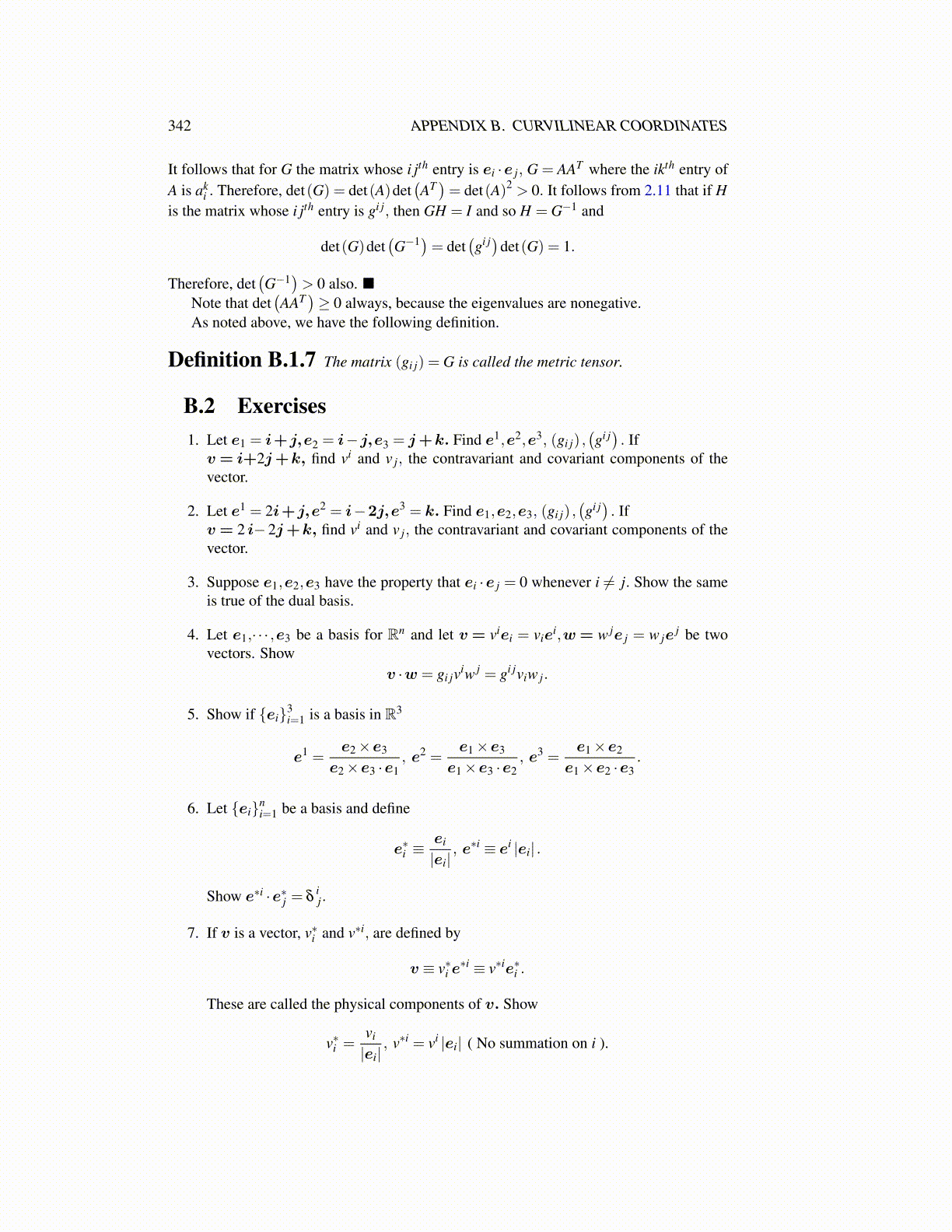
342 APPENDIX B. CURVILINEAR COORDINATES
It follows that for G the matrix whose i jth entry is ei ·e j, G = AAT where the ikth entry ofA is ak
i . Therefore, det(G) = det(A)det(AT)= det(A)2 > 0. It follows from 2.11 that if H
is the matrix whose i jth entry is gi j, then GH = I and so H = G−1 and
det(G)det(G−1)= det
(gi j)det(G) = 1.
Therefore, det(G−1
)> 0 also. ■
Note that det(AAT
)≥ 0 always, because the eigenvalues are nonegative.
As noted above, we have the following definition.
Definition B.1.7 The matrix (gi j) = G is called the metric tensor.
B.2 Exercises1. Let e1 = i+j,e2 = i−j,e3 = j+k. Find e1,e2,e3, (gi j) ,
(gi j). If
v = i+2j+k, find vi and v j, the contravariant and covariant components of thevector.
2. Let e1 = 2i+j,e2 = i−2j,e3 = k. Find e1,e2,e3, (gi j) ,(gi j). If
v = 2 i− 2j+k, find vi and v j, the contravariant and covariant components of thevector.
3. Suppose e1,e2,e3 have the property that ei ·e j = 0 whenever i ̸= j. Show the sameis true of the dual basis.
4. Let e1,· · · ,e3 be a basis for Rn and let v = viei = viei,w= w je j = w je
j be twovectors. Show
v ·w = gi jviw j = gi jviw j.
5. Show if {ei}3i=1 is a basis in R3
e1 =e2×e3
e2×e3 ·e1, e2 =
e1×e3
e1×e3 ·e2, e3 =
e1×e2
e1×e2 ·e3.
6. Let {ei}ni=1 be a basis and define
e∗i ≡ei
|ei|, e∗i ≡ ei |ei| .
Show e∗i ·e∗j = δij.
7. If v is a vector, v∗i and v∗i, are defined by
v ≡ v∗i e∗i ≡ v∗ie∗i .
These are called the physical components of v. Show
v∗i =vi
|ei|, v∗i = vi |ei| ( No summation on i ).